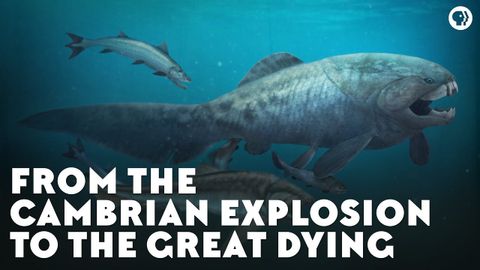From the Cambrian Explosion to the Great Dying
joey joey が 2021 年 04 月 30 日 に投稿  この条件に一致する単語はありません
この条件に一致する単語はありませんUS /ˈɛpɪˌsod/
・
UK /'epɪsəʊd/
US /ˈpɪriəd/
・
UK /ˈpɪəriəd/
- n. (c./u.)期間 : 時代;強調;終止符;生理;授業時間 : 時限
US /ˈenʃənt/
・
UK /'eɪnʃənt/
US /dɪˈvɛləp/
・
UK /dɪ'veləp/
- v.t./i.展開する;開発する;発達する;現像する;発症する;磨く
エネルギーを使用
すべての単語を解除
発音・解説・フィルター機能を解除

